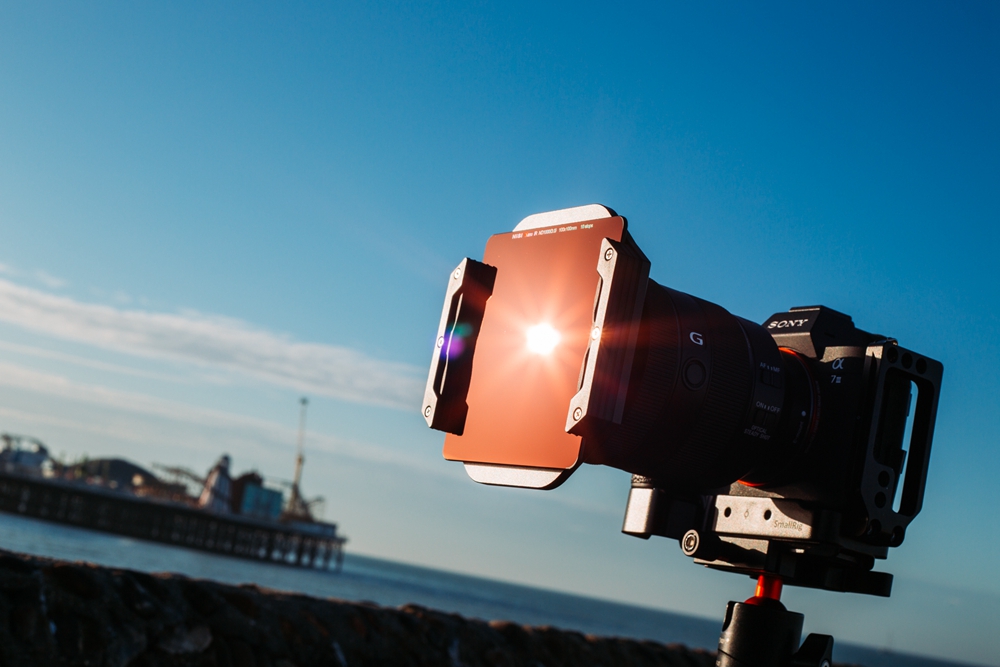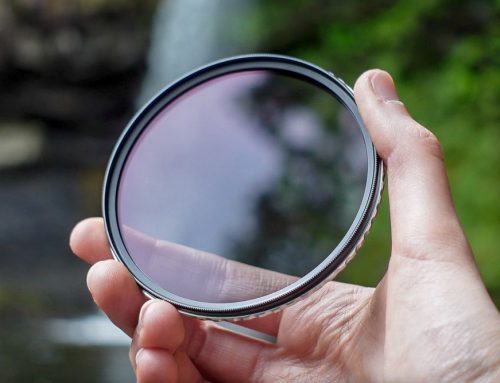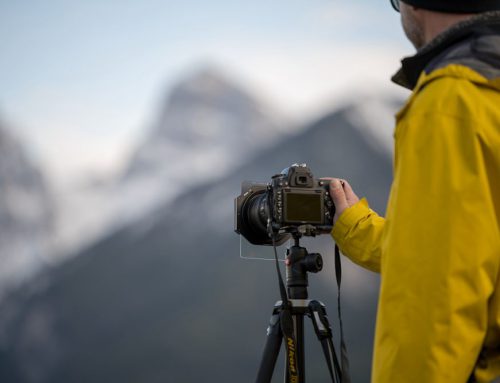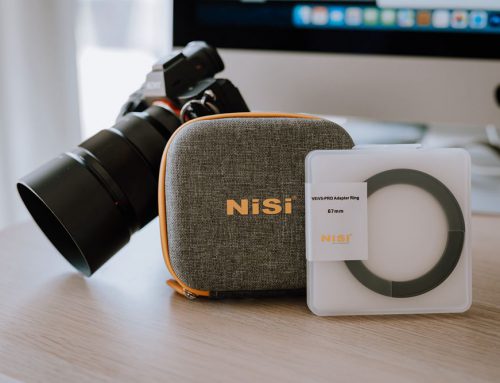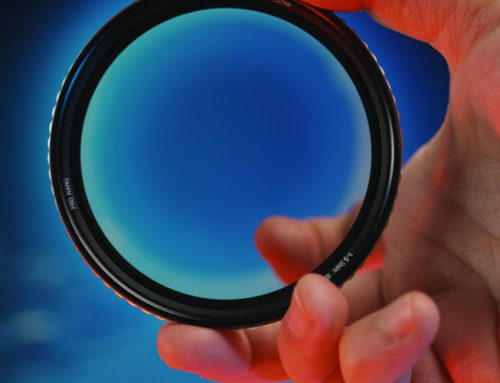INNOVATION
The design of filters systems has been a bit stagnant for many years now, but we are starting to see some really interesting innovation when it comes to their design. A trusted brand, and recommended by many of my fellow photographers, Nisi reached out to me and asked whether I would like to review their latest filter system. I said yes, because I like change, and I have been using the same filter system since 2014. It serves a purpose, but as you will see in my video review, there are many benefits in upgrading to the latest filter systems. It was time for an upgrade.
What’s new?
Nisi are on their seventh edition of this filter system, therefore its no surprise that it is well thought out and very practical to use. Its not a radical redesign of how filters are held in front of your lens, but small design changes means that you can get to the photography quicker. If you are coming from an ‘older’ filter holder, like I was, then there are two main differences; the locking mechanism that holds the system onto the lens, and the way that the polariser integrates with the system.
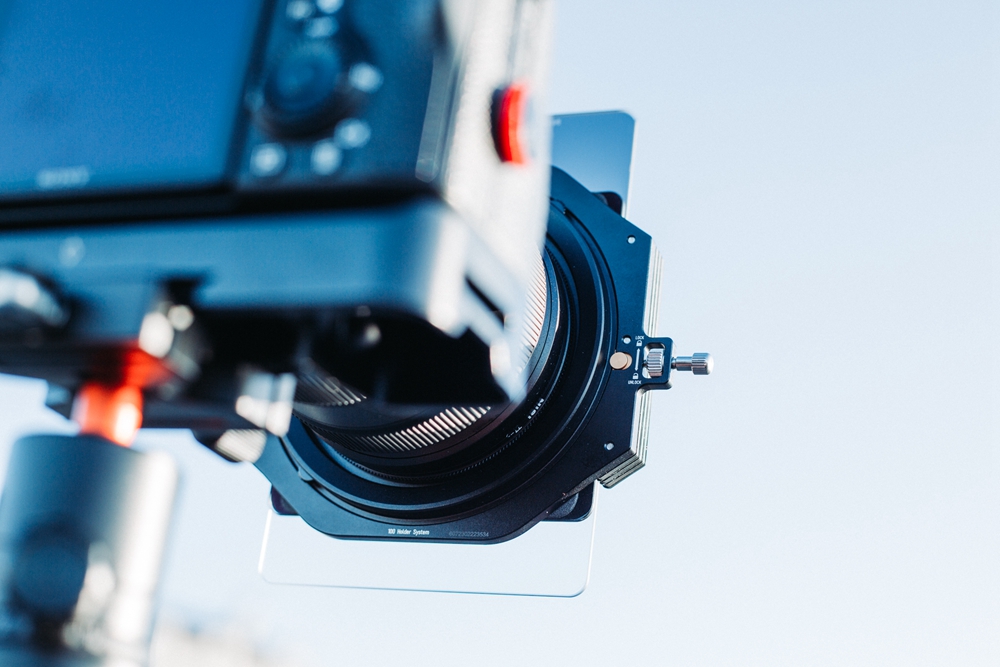
(Locking mechanism that allows quick release to the adaptor ring)
QUICK RELEASE
My older Hitech filter holder is a bit rudimentary, it has a bolt on the side that you tighten to clamp the filter holder in place. If it’s not tight enough it could come off, too tight and you could scratch or dent the adaptor ring. The Nisi filter in contrast has a spring loaded mechanism, indicated by the movement of the gold clip (see photo above), and you can twist the middle nut to ensure that you don’t accidentally release the holder. If you watch my review video, you will see that I manage to use the system and filters with thin gloves on, which is an achievement.
WHERE IS THE POLARISER?
Well, traditionally if you wanted to use a filter system with a polariser, that meant investing in a very large polarising filter, in the region of 105mm, which sits on an adaptor in front of all the other filters. Why does it need to be so big? Because the further you install filters away from the front of the lens, the greater the chance of vignetting. The solution is therefore to make the polariser massive, so that you can use wide angle lenses and the edge of the filter does not appear in your photos. This was the thinking behind the older systems anyway. Fast forward to 2022, and it seems obvious now, the polariser now sits at the beginning of the filters, closest to the lens. We don’t need such a large polarising filter anymore.

(Nisi True Color polariser mounted to the V7 filter holder)
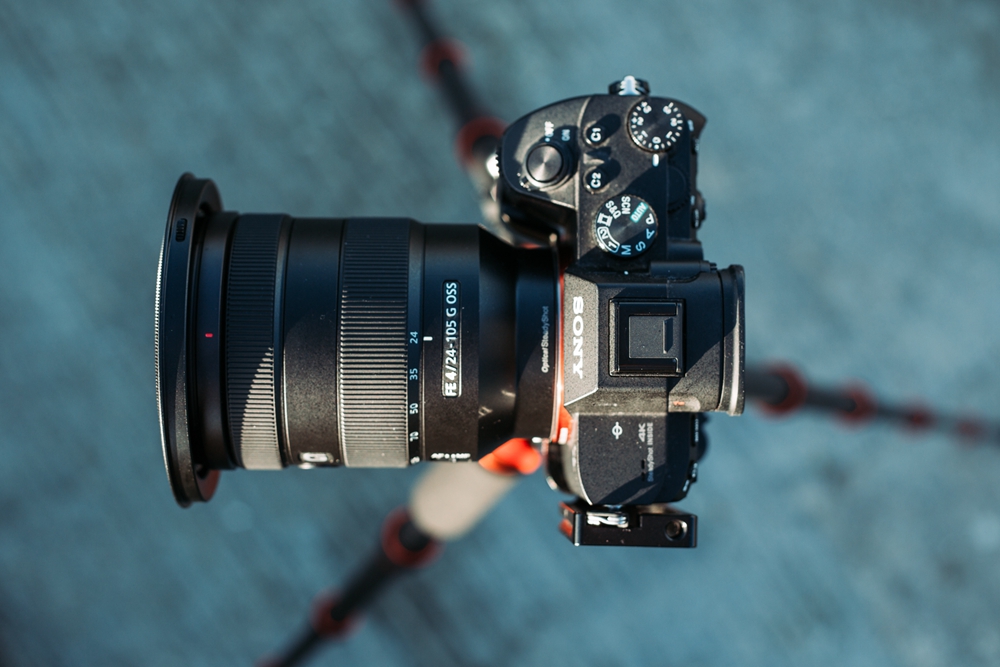
(Slim profile of the polariser means no vignetting up to 15mm on a full frame camera)
Due to the super-slim profile of the polariser and adaptor ring, this system will certainly let you shoot at 16mm on a full frame, and Nisi claim up to 15mm (but I don’t have a lens to test this!). If you were concerned that putting the polariser first was going to be an issue when you slide in the other filters then fear not. There are two wheels/cogs on the side of the adaptor ring that allows you to turn the polariser and dial in how much polarisation you require.
WHAT’S IN THE BAG?
Included with the V7 kit is the adaptor ring, the filter holder (more on that below), step down rings (includes sizes 67, 72 and 77mm), 82mm is integrated into the adaptor ring itself, the True Color polariser a filter cap and a carry case.
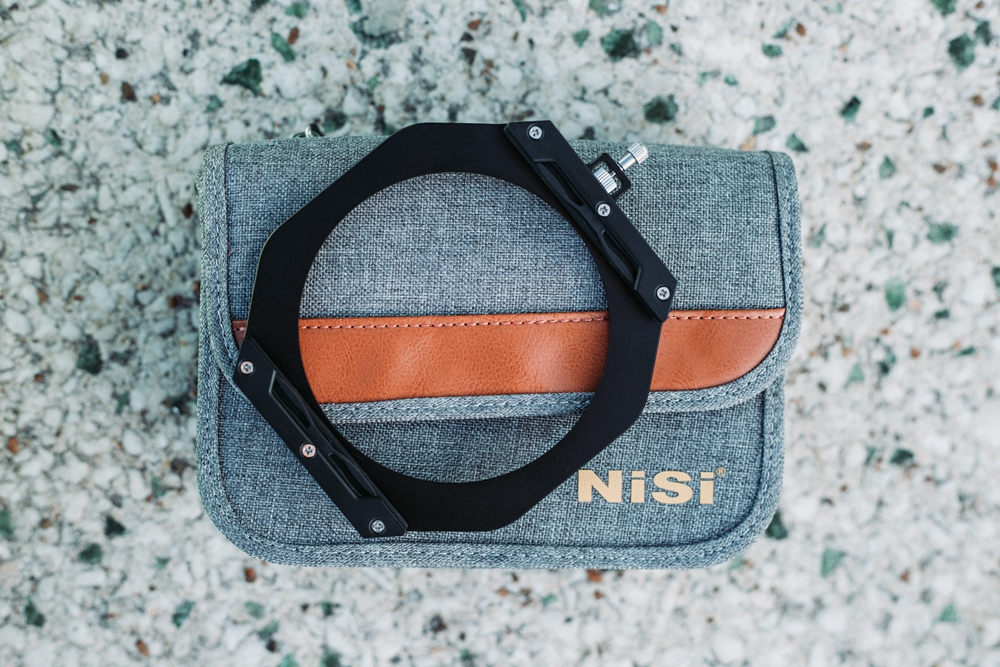
(Photo shows the V7 filter system with the optional filter carry case)
Let’s start off with a bit of a surprise, the filter cap. It is such an inexpensive item when you consider most photography equipment – but the filter cap is such a time saver. One of the challenges with using filters, especially in cold weather, is screwing on the adaptor ring. It might sound trivial, but the thread does not always take, you stand there turning it and turning it and then you realise that you are not getting anywhere. Or worse, if you think it has gripped and you risk your filters falling off. Combine that with cold mornings, and you can see why some people opt not to use filters at all!
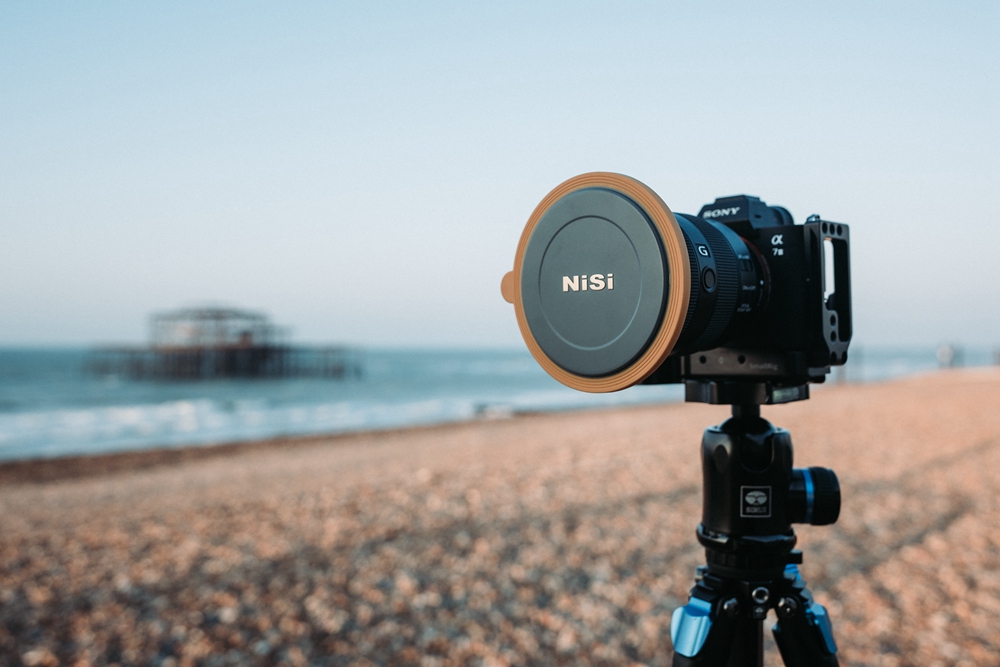
(Nisi filter cap – a massive time-saver)
Introduce a filter cap and now you don’t need to screw in filters anymore. You simply leave the filter adaptor on your favourite lens the whole time, with or without the polariser mounted, and you can transport it around with the filter cap. This will save time, plus it keeps the dust off your lenses when they are in your bag. It also doubles up as a handy rubberised grip to screw and unscrew the filter adaptor.
THE FILTER HOLDER
We have already discussed the quick release mechanism that allows the holder to clamp on and off the adaptor ring. Like most filter systems, this has several ‘slots’ for filters, out of the bag it allows for three – however you can add more at the risk of introducing vignetting. Even with the polariser and the three filters stacked, I was able to shoot at 16mm (full frame) without the filter system entering the composition. The filter holder is universal, therefore you are not tied to using Nisi filters, my Lee filters fitted just fine. The filter system is made of aluminium and comes in black or…… black.
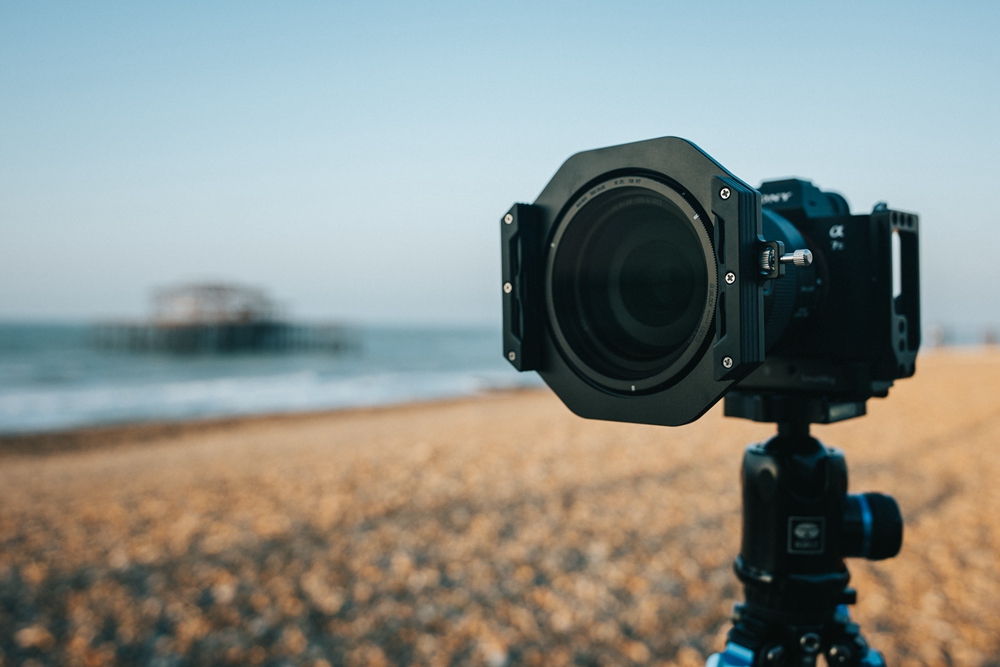
IS IT ANY GOOD?
Having used the system for several weeks prior to making the review, it certainly felt like the evolution of the filter holder. It was a pleasure to use, quite fun actually, and I even managed to use it with a thin pair of gloves on. I always take off at least one glove to fit my older filter system, for fear of dropping it if the thread didn’t take. I haven’t used the V6 or earlier iterations, I couldn’t say whether you should upgrade from those models if you are a current owner, but the design certainly feels refined and I have no suggestions for improvements to the holder system at all. In my video review I commented on the amount of space that the filter holder case takes up in the camera bag and have suggested that this should be reviewed to save more space. I would give the V7 a 9 out of 10. I leave the remaining one for future innovation, but I would highly recommend it to anyone looking for a high quality and versatile filter system.
AND THE FILTERS?
Nisi kindly sent me some of their filters to review also. They sent me a ten stop filter, two grad filters and a filter carry case. All of these filters are glass, and I cannot stress how nice it is to be using glass filters again!
(Nisi 10 stop True Color filter)
Starting with the ten stop filter, you will see from the above photo that the filter has a strong red appearance when reflecting light. This is the result of the coatings that the filters have, making them very resistant to dust and water droplets, something that I showed in the YouTube review when I was caught out by the rain one morning. Despite the red colour of the coatings, the colour cast is very well controlled by this filter. To make the comparisons as accurate as possible I created a photograph with no filters, using a custom white balance and a grey card. I then proceeded to create a long exposure using the ten stop filter and compared the two. Having used several ten stop filters (Lee, Freewell, Hitech, B+W and H&Y) I am happy to report that it was a very good performance from the Nisi ten stop. It wasn’t completely neutral, the colour cast was very subtle, but it was there. If you watch the YouTube review you can see the images side by side.
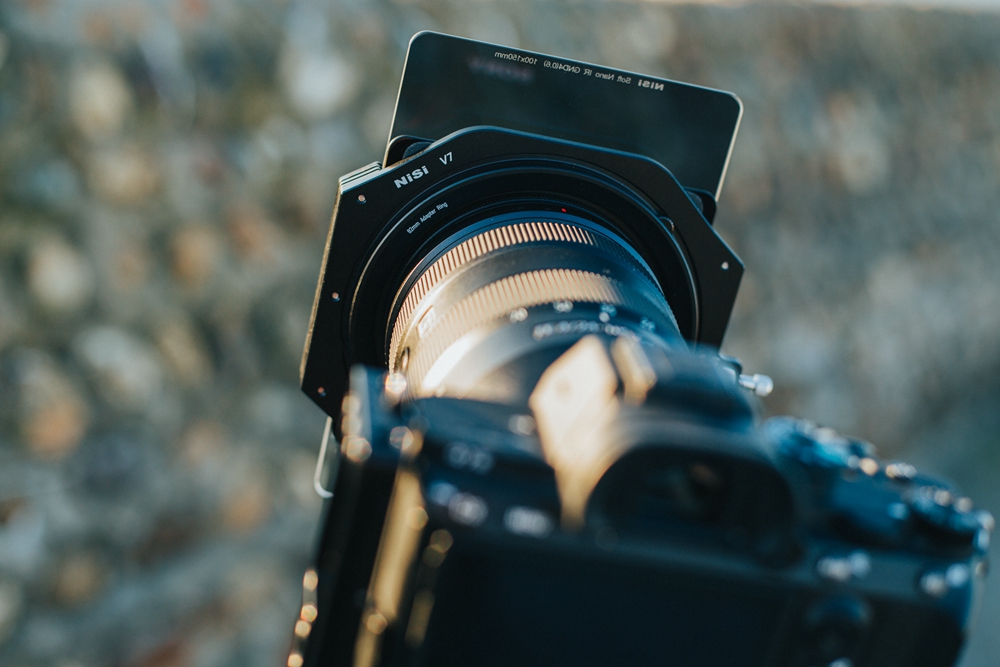
(Grad filters in use)
The two grad filters that they sent me to test were the two stop hard edge grad and the two stop soft edge grad. I wouldn’t expect these filters to create a colour cast, but I tested them in the same way as the ten stop filter and they were neutral. The filters, like most other brands, are 100mm wide by 150mm high, which allows you to position where you would like the graduation to affect your scene. Optically all of the filters on test here were excellent, I saw no degradation to the quality when comparing to the image with no filters. The filters have a small label on the front at the top, which is helpful to figure out which filter you have picked up. The filters come with a leather-effect pouch, which is well presented and has the potential to be transported with a very small footprint in your camera bag, however I was informed by Nisi that for the best protection the filters should be transported in a dedicated filter carrier.
ARE THEY PERFECT?
Optically, yes. Colour control, almost – the ten stop has a subtle colour tone which is very manageable. There is one suggestion that I have put to Nisi though, and that relates to taking the filters in and out of the carry case (either the supplied or the optional carry case). The filters are glass, they are beautiful but my greasy fingerprint will show up on them, despite the coating. In an ideal world I avoid touching the front or back of the filters and clamp them between my fingers from the sides. However the pouches have a snug fit and you are left with no choice but to pinch them in the middle with your fingers to get them out. This is easily rectified with a redesign of the carry case, this is not a fault of the filters themselves as most filters would have the same issue.
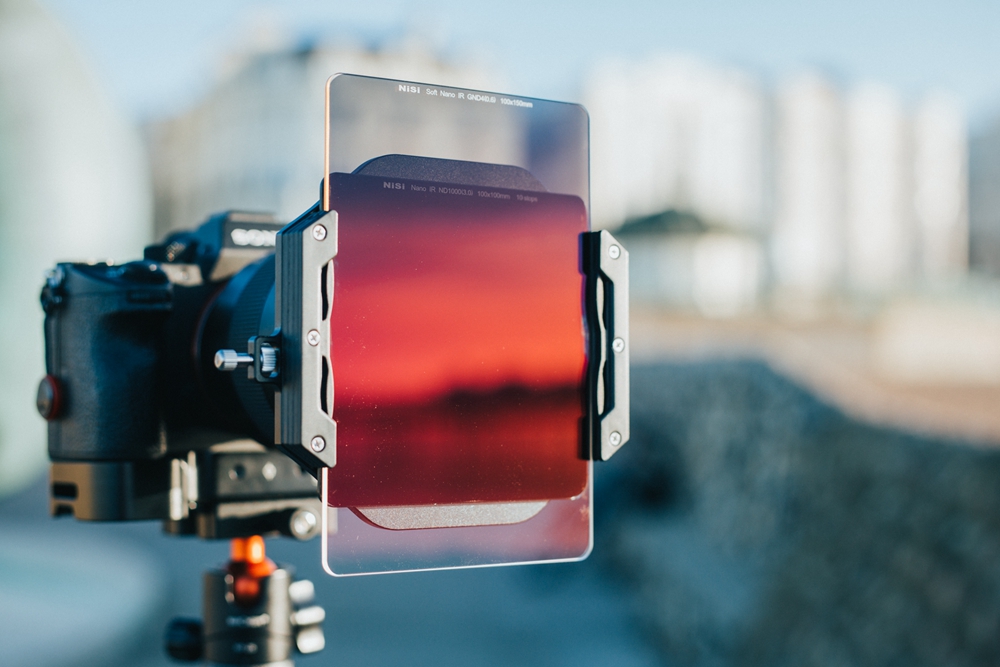
WOULD YOU GET THE WHOLE KIT?
It is great that you can mix and match filters and filter systems, but I wouldn’t want to go back to using resin filters now that I have been using glass. Although it might seem like a minor gain, the coatings on these filters performed so well when they were hit with rain and sea spray, that would be enough reason to get these if you shoot a lot of seascapes. I am used to cleaning my other filters when I get a bit of sea spray on them, a microfibre cloth usually smears the droplets across the filter and I end up using an alcohol wipe to actually get the salty water off the filter. Leave it ten seconds for the alcohol to evaporate and I can proceed to take the next photograph. The Nisi filter in comparison just wouldn’t tolerate the water staying on them, it was like magic! The filters are not cheap, but photography is an expensive hobby and I know that these filters will last me a long time; therefore it is a good investment to get the best filters that you can afford. The filters come with a highly recommended from me.
THANK YOU
For making it to the end of this blog, I hope that you found it useful, and thank you to Nisi for supporting my photography. If you have any questions then drop me a comment on the YouTube video.
by Ben Harvey


